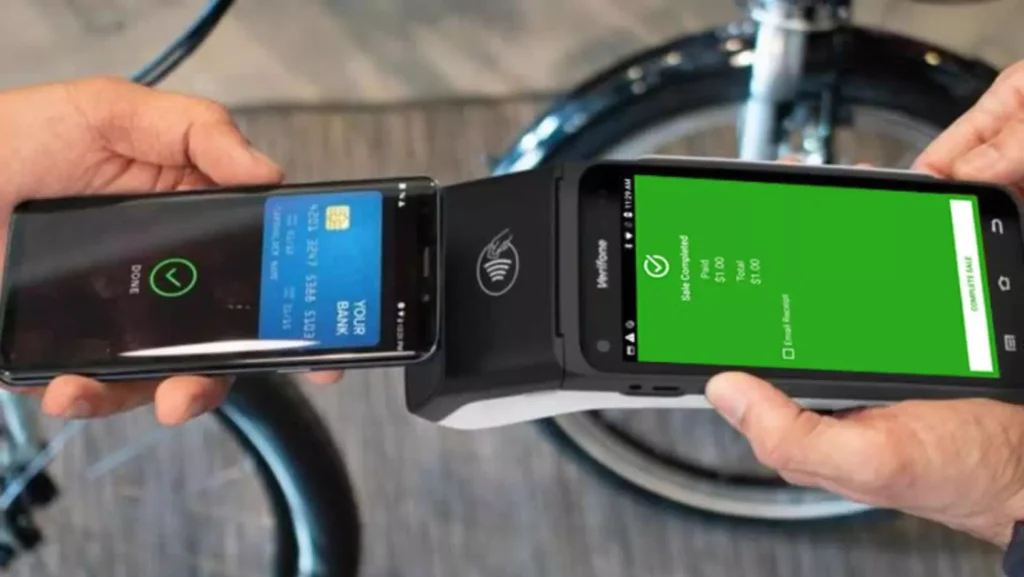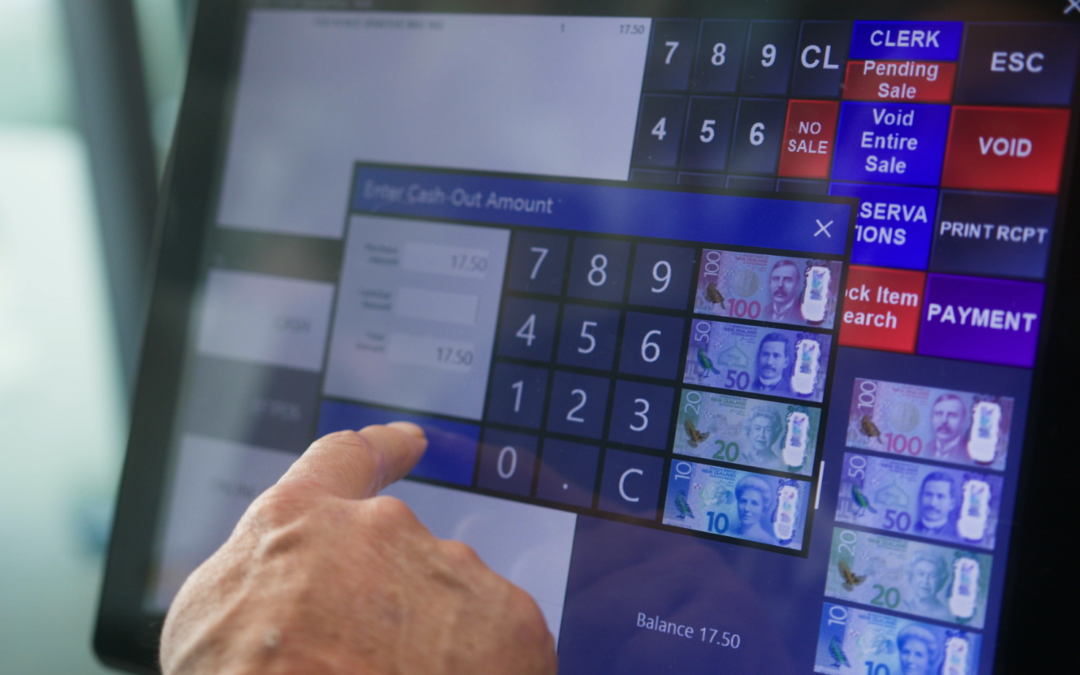If you travelled back in time to New Zealand 1984, not using coins and notes to pay for purchases was a completely foreign concept. Employees were still being paid cash in brown envelopes and cheques were widely used.
News articles about a burgeoning technology that would process payments electronically were met with mixed feelings. Joy at the thought of securely carrying money without the need for a bulky wallet, and conversely, fear of loss of privacy and ‘big brother’ recording our every transaction.
We either jumped on board right away or held back, observed and gradually relented, and pretty soon the fear of not being able to memorise a 4-digit pin number became a thing of the past. When you think of the slew of passwords we commit to memory nowadays, it seems like such a ridiculous concern
EFTPOS History
From its humble inception at Shell stations in 1985, EFTPOS eventually gained wider popularity and New Zealanders adopted the new technology so readily that when they travelled overseas, they were surprised to find that the rest of the world were not as advanced in their EFTPOS capabilities.
By 1989, Kiwi banks realised that while EFTPOS was free for the consumer, the banks were burdened with the expense of each transaction. In a bid to stop BNZ from withdrawing from the technology altogether, the four major banks at the time joined forces and formed Electronic Transaction Services Limited (ETSL), which is now Worldline.
Fast forward 33 years and it’s obvious that the banks’ collaboration banished any threat to EFTPOS and we’re now at a point where swiping, tapping, and inserting a plastic card is an automatic reflex. The ability to use an Apple Watch or cell phone to completely negate the need to carry a plastic card has further liberated the paying customer. A Reserve Bank survey in 2019 found that 90% of those surveyed preferred to pay without using cash. Of course, whether preferred or not, during the Pandemic contactless payment was encouraged and sometimes mandatory and physical cash was seen as scarce and unhygienic.
What is EFTPOS?
So, what is EFTPOS? EFTPOS stands for electronic funds transfer at point of sale. Payment is taken using payment terminals at the location where trade is taking place using an embossed plastic card. In New Zealand, the Bank of New Zealand first issued debit cards and initially only petrol stations had the terminals required to accept the new payment method. The terminals initially communicated over landline (and still can) and most older Kiwis will remember having to wait for a store owner to end their telephone call before the customer could pay by EFTPOS.
Nowadays, there are in excess of 85,000 merchants using EFTPOS in New Zealand. And our experience at Eftpos Now attests to the fact that this number is increasing daily. Even stall holders in markets (who traditionally maintained a cash only stance) are moving to EFTPOS technology as they gauge the loss of potential sales.
The leading payment network is Worldline (formerly Paymark) who process 70% of New Zealand’s payment transactions. To the many retailers who use EFTPOS technology, choosing a network like Worldline is fundamental as this is how the funds from an EFTPOS purchase are securely transferred to the merchant’s business bank account. Securing a merchant number and terminal ID are essential for the operation of an EFTPOS terminal. Eftpos Now who are a Worldline accredited reseller, play a pivotal role in connecting merchants with this valuable network.
As a conduit for each transaction, Worldline and the other major network, Verifone, ensure the security and privacy between the merchant’s bank, merchant, cardholder, and that cardholder’s own bank – are preserved. They ensure each transaction is highly encrypted, accurate, and performed at lightning speed. With Worldline alone processing 2 billion transactions in New Zealand each year, the interconnected financial network plays a crucial role in commerce in New Zealand. The relationship can be initiated through any of the major banks, or through an EFTPOS accredited reseller – the latter providing the quickest and most direct relationship.

Business Applications
In a business environment where transparent and real time access to transaction details is hugely beneficial, Worldline and Verifone also offer reporting portals and are constantly looking at improving and innovating payment platforms.
Worldline is now owned by French company, Ingenico, whilst Verifone is owned by an American company. The dominance of these transactional service providers extends to hardware and explains why the majority of EFTPOS terminals in New Zealand carry the brand names Ingenico or Verifone. This hardware communicates over landline, WIFI, and GPRS (which entails the use of a SIM card and provides for truly mobile and remote operation) and designs are becoming more sleek and versatile each year.
In November 2022, payments transacted over the Worldline network in New Zealand amounted to $3.18 billion (excluding hospitality). While this was obviously an increase on previous years of stunted growth due to Covid, one major reason why this number is not growing exponentially is due to merchant fees in New Zealand being higher than most other countries. Merchants in New Zealand pay an average of $13,000 more per year than their Australian counterparts. Tap & Go (or Paywave) fees for credit cards are almost 4 times that of contactless debit card transactions. Reporting tools such as those provided by Worldline, become invaluable tools in helping merchants understand what transactions are attracting higher merchant fees and adjust those facilities accordingly.
As Paywave/contactless transactions were encouraged during the pandemic, the cost of this was waived by the banks but reintroduced after lockdown measures were lifted. The strain of these fees and those for Mastercard and Visa transactions (widely agreed as being the third highest cost after wages and rent for retailers) has forced the NZ Government to enforce the Retail Payment System Act 2022. Whilst this news is welcome, it only applies to interchange fees which make up a small portion of total merchant fees. The change is widely seen as a positive step in the right direction and with a recession looming, a reduction in any overhead passed on to consumers is essential.
New businesses and existing businesses looking to acquire or upgrade EFTPOS technology are spoilt for choice and the ability to research products has produced very discerning merchants. Once a merchant number is secured and a terminal ID issued for each EFTPOS terminal in the business, operation can simply take place the very day the retailer takes possession of an EFTPOS terminal. To understand merchant numbers, terminal IDs and their importance in the payment value chain, see our FAQ page.
Our advice to merchants is to understand how to use the EFTPOS terminal to its optimum, ensure each terminal ID has the required functionality (i.e., payWave, credit card etc), adhere to software upgrades, maintain SIM cards (where applicable) and protect the terminal as carefully as they would do a laptop. Rather than be lured into the promise of low rental rates, consider the endurance and reliability of the traditional EFTPOS terminal that prints receipts, is user friendly and familiar, and transacts instantaneously. You’ll notice the comprehensive Eftpos Now fleet offers these types of units and not devices like card readers or cell phones.
Another advantage of hiring an EFTPOS terminal from Eftpos Now is that we are ahead of industry news and can anticipate wholesale upgrades to certain EFTPOS terminal models. Terminals can be made completely obsolete when they no longer meet mandatory security standards, and we can avoid the possibility of a merchant finding themselves outside of the Worldline network due to non-compliance.
Despite the fact that transacting payments is the ultimate goal for any business owner it is often one of the last considerations when fledgling businesses launch. Fortunately, the process is extremely simple and made easier by EFTPOS providers like Eftpos Now who provide a service approach that is as personal and extensive as the client demands. There are 150,000 EFTPOS terminals connected to the Worldline network alone, and whilst Eftpos Now has supplied a fraction of this number to merchants, we value each and every business who has chosen us to help them navigate EFTPOS use.
While any transaction value can be manually keyed into an EFTPOS terminal and is perfect for a taxi driver or short-term rental customer at a market, integration with a cash register or POS system is essential for quick and accurate transactions. The humble cash register is completely appropriate in some retail settings but for those opting for a Point-of-Sale system, there are huge benefits including inventory management, sales and customer analytics.
Visit any dining precinct within a New Zealand Shopping mall and you will find that the EFTPOS terminal is a small part of an intricate network of communications between displays, kiosks, kitchen printers, and many other components and applications. Amid COVID peaks and labour shortages, staff numbers are subject to fluctuations so it’s very beneficial to have the walk-up customer place their own order, or transact quickly, thus allowing staff to nimbly prepare and deliver the order or focus on other areas of the business.

Conclusion
As automation advances daily, it is clear that the EFTPOS terminal is gateway technology to new and exciting payment processing options and running a successful business.
FinTech (financial technology) is extremely topical at the moment with ‘open banking’ recently being adopted in New Zealand. Is it possible that our tiny country in the Pacific might again spearhead and lead international banking innovations as we did in 1989?

